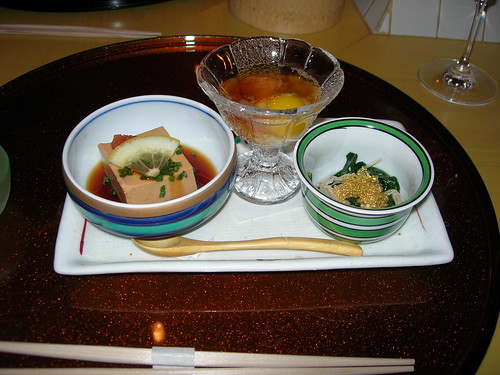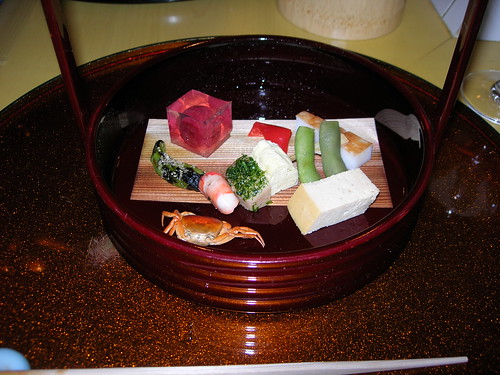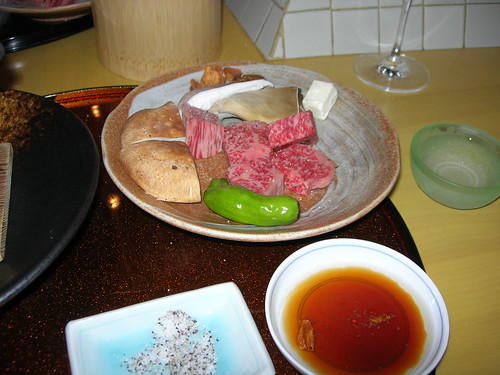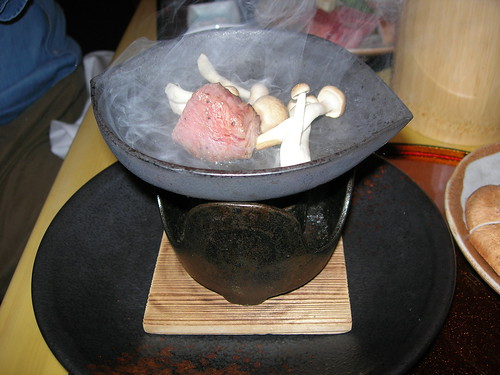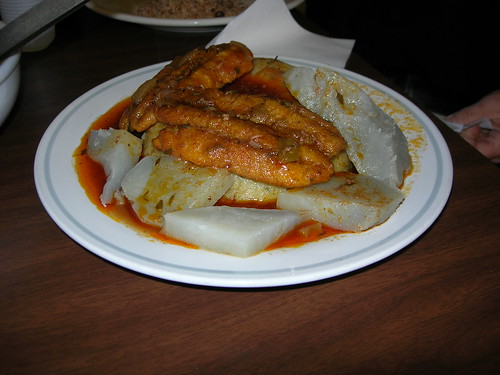Sushi Cartel New York City Entry #90 Sushi Yasuda
With the discussion of late of how Rev. Moon's Unification Church (through linked companies) controls the world's supply of raw fish, perhaps Americans should stop grousing about the Arab stranglehold on oil, and start glancing nervously towards the mysterious East for its domination over Omega3. Whether this is a source of concern, the articles in Chicago Tribune and elsewhere remind us again, should we need to be reminded, how little we know of the process by which food magically appears.
When we learn - whether fish or foie gras, veal or venison - our nerves are on edge. So much of the good life depends upon a studied obliviousness, of turning our minds from the dirty work that permits us to clean our plate. As is said of legislation and sausage making, surveillance is dangerous for one's digestion. There is a politics everywhere. Discovering how food is brought to the table is enough to turn one's stomach and raise one's voice - and let us not even think about caviar. Ignorance makes dining possible.
Sushi Yasuda depends on our willingness not to think too hard about raw fish and trades on our confidence in Chef Naomichi Yasuda. And that confidence is well-placed. Yasuda is the highest rated Japanese restaurant in Zagat 2006 - the fifth highest overall - higher rated than such notables as Masa, Sugiyama, and Nobu. Yasuda, however, is not among the fifty most popular, suggesting - accurately - that Yasuda is a restaurant for connoisseurs.
Sushi Yasuda is also one of those serene spaces found in corners of New York. Laminated in light wood (perhaps a white oak, though no tree specialist I), it is not a jewel box, but a humidor. (Momofuku seems an off-kilter and microscopic tribute to Yasuda; Yasuda with the air squeezed out). Yasuda is one of the quietest, most civilized, most adult restaurants in New York.
Unfortunately it is not a restaurant that bends over to please. A group of nine chowists attempted to make a reservation and were told that they only take reservations for parties up to six. Fine. Reservations were made for parties of five and four. Many restaurants would have directed us to two tables together or, better, moved them together on our arrival (such would not have been difficult). Instead, we were seated in opposite ends of the restaurant, as if to suggest that we would not be permitted to violate their rules. It seemed unnecessary, especially in a city so devoted to rule-bending. The service was certainly precise, but not as helpful as it might have been, a combination of distance and disdain.
Still, we were there for the fish, which was always fresh and often exceptional, especially once the sushi arrived. None of our three appetizers were memorable. Best was the soft roll with young mackerel and sea bream. These were luscious bites of fish with a texture close to custard, an impressive opener. The flash fried prawns with green tea powder were nicely crunchy, a unique texture, although the taste was not much different from any lightly fried shrimp. Least impressive was a grilled Spanish mackerel, marinated in sweet sauce. Here the sauce did not live up to its billing and the fish the least compelling texture of the night, almost grainy.
After these appetizers, we treated ourselves to a banquet of sushi and maki rolls. Chef Yasuda takes the quality of the fish so seriously that on the sushi/sashimi list he indicates what he recommends from his own list. He is like a server willing to second-guess the kitchen. In general, we obeyed his commands. Our choices included fluke, chum salmon roe, sea urchin (Maine), sea urchin (California), otoro, eel (anago), eel (unagi), peace passage oyster (perhaps from Hiroshima?), arctic char, king salmon, white king salmon, Tasmanian trout, kimedai, monkfish liver, orange clam, and then a few maki rolls, including toro, mitsuba (chervil), and ume (cherry/shiso). With one or two bites, a close reading is not to be had. But the quality was well-pleasing matched by its excellent rice. Perhaps not the most exquisite sushi, especially in contrast with a recent breakfast repast at the Tsukiji fish market in Tokyo, there were few missteps and several brilliant choices. I particularly enjoyed the Godly oyster sushi, the Maine sea urchin, flavored with a bit of sea salt and tasting like foie gras of the waves (and much better than a too creamy California version), a buttery fluke, the eel, and a most interesting, herbal chervil maki. Salmon and char were also at the high end. Less impressive was the toro maki and, as mentioned, the California urchin. At Sushi Yasuda, one must taste one's sushi before even thinking of dipping it. The chef adds what he conceives of as the proper amount of wasabi, and some of the bites had a rare heat. This is not fish and rice, but fish and rice and philosophy and care.
With this my second visit to Sushi Yasuda, I find it a restaurant that is easier to respect than to love. And I do respect it. Perhaps the space cools my ardor, perhaps it is the service, or perhaps it is the maki and starters that sometimes sing and sometimes hum. The fish is exceptional and the chef is a master and, for us, with sake, tax and tip, the meal was well-priced at $90.00. Yet, I remember Sugiyama and Nobu with such fondness than despite my great and true admiration for the work of Chef Yasuda, I am next likely to think of contributing my tithe to the very Rev. Moon across town.
Sushi Yasuda
204 East 43nd Street (at Third Avenue)
Manhattan (Midtown)
212-972-1001
year end: reality is a long game…. (2023)
2 years ago
